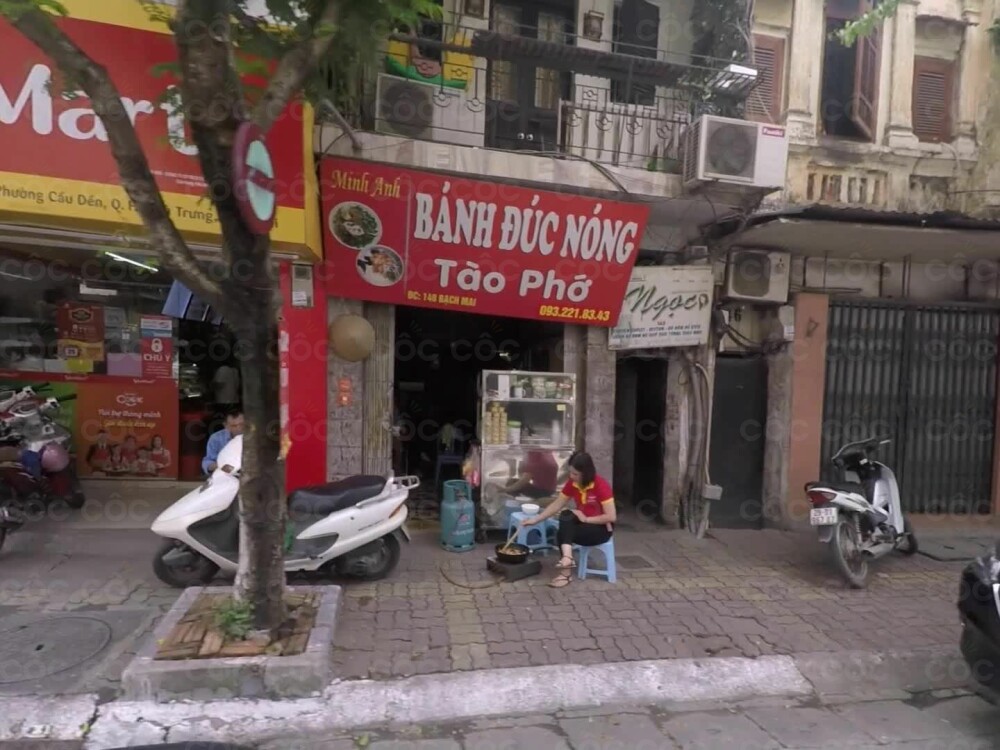Bánh Đúc Nóng (Vietnamese Savory Rice Cake with Minced Pork and Mushrooms)
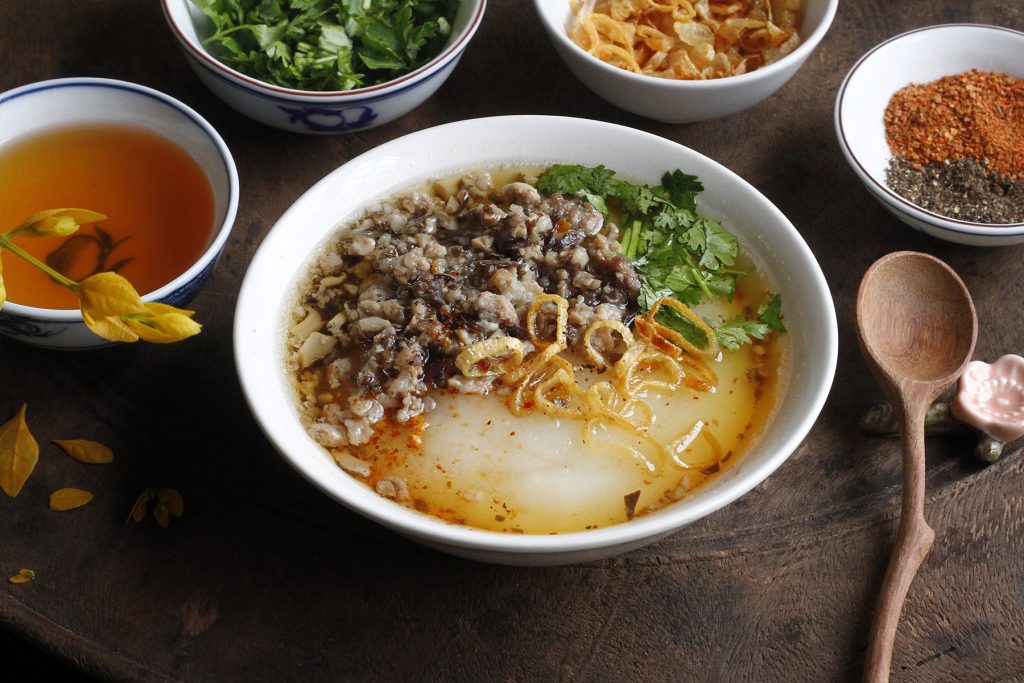
Ingredients
-
200g rice flour
-
200g tapioca starch
-
50g glutinous rice flour
-
200g ground pork
-
20g shiitake mushrooms
-
20g wood ear mushrooms
-
A few sprigs of coriander (rau mùi)
-
Minced garlic and chili, to taste
-
2 shallots, minced
-
1 tbsp cooking oil
-
1 tbsp vinegar
-
2 tbsp fish sauce
-
Basic spices: salt, sugar, pepper
How to Choose Fresh Pork
-
Look for pork with a light red or pinkish-red color and a glossy, dry surface.
-
Press the meat gently: it should spring back and not leave a dent or feel sticky.
-
Avoid any cuts that are grayish, greenish, slimy, or have an unusual smell — they may be spoiled.
-
Tip: Buy whole cuts and grind them yourself to ensure hygiene and quality.
How to Choose Good Wood Ear Mushrooms (Mộc nhĩ)
-
Pick mushrooms with large, thick caps and a rich amber-brown color.
-
Avoid those with black color, mushy texture, or signs of mold.
-
Note: The underside should be light brown or coffee-colored — not slimy or pale.
How to Choose Fresh Shiitake Mushrooms (Nấm hương)
-
Choose mushrooms that are whole, dry, and light brown in color.
-
Avoid broken caps, white mold, or any unpleasant odor.
-
Tip: Buy from reputable dry goods stores or supermarkets for better quality control.
Nutritional Information
For: Meat-eater
Calories per serving: ~390 kcal
Key Nutrients:
1. Carbohydrates
Sources: rice flour, glutinous rice flour, tapioca starch
Benefits: provides energy and satiety
2. Protein
Source: ground pork
Benefits: muscle support and cellular repair
3. Polysaccharides
Source: wood ear mushrooms
Benefits: may enhance immune and gut health
4. Umami compounds
Source: shiitake mushrooms
Benefits: boosts flavor and may support immunity
5. Antioxidants
Source: garlic, shallots, chili
Benefits: support immune system and reduce inflammation
1. Cook the Meat Topping
- Soak dried wood ear mushrooms and shiitake mushrooms in cold water for about 30 minutes until soft. Remove tough stems, rinse clean, and finely chop.
-
In a pan, heat some oil and sauté minced shallots until golden and fragrant. Remove half of the fried shallots and set aside.
-
Add minced pork, chopped mushrooms to the pan, and stir-fry over medium heat until the meat is half cooked.
-
Season with:
-
1 tbsp fish sauce
-
1 tsp salt
-
1 tsp pepper
-
-
Continue cooking and stirring for another 10 minutes until fully cooked. Turn off the heat.
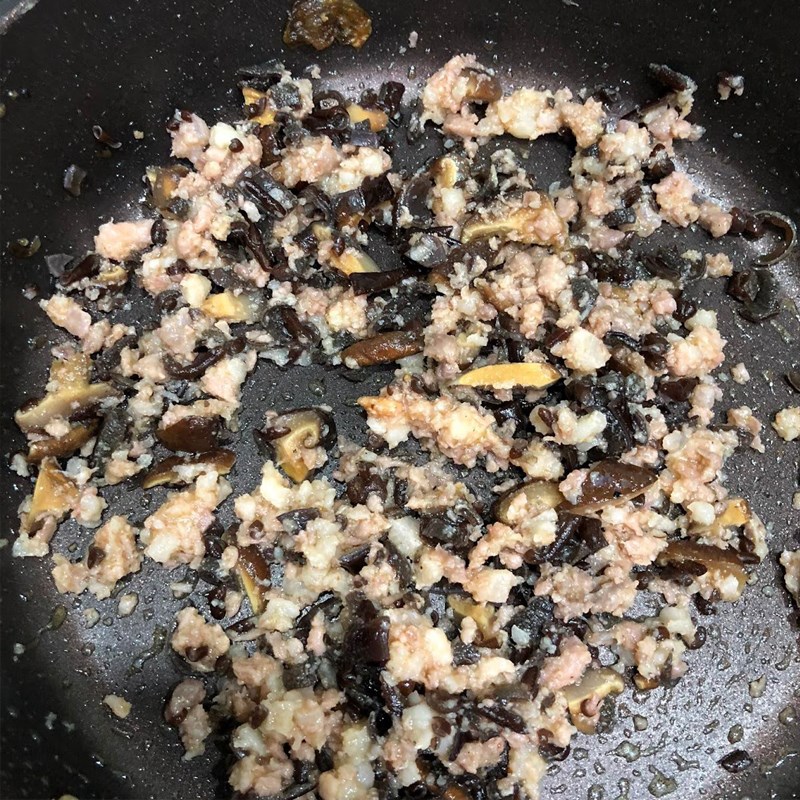
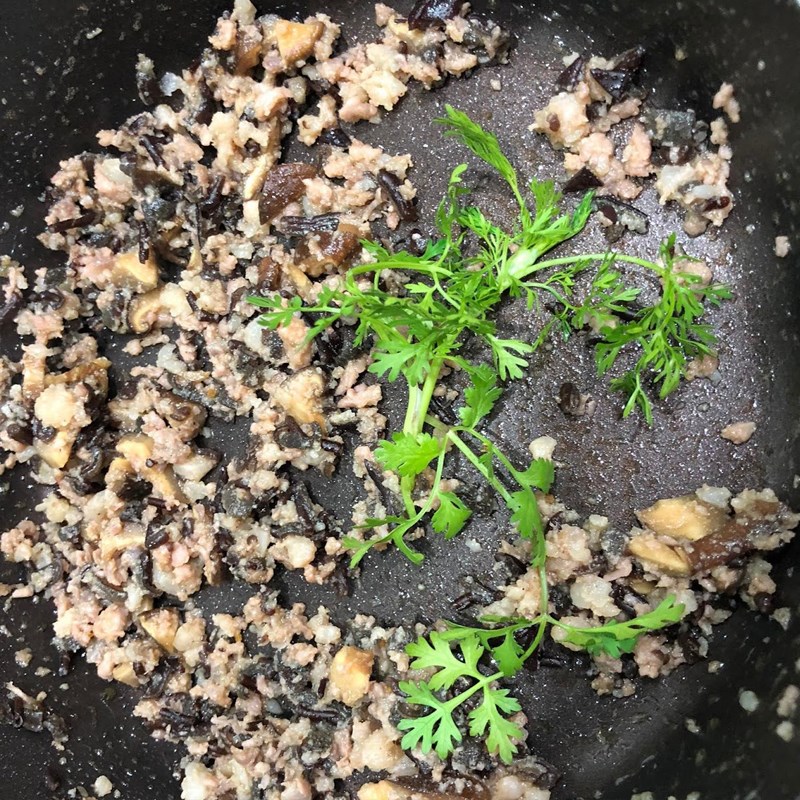
2. Make the Bánh Đúc Base
-
In a large pot, combine:
-
200g rice flour
-
200g tapioca starch
-
50g glutinous rice flour
-
1 liter water
-
-
Stir well until the mixture is smooth and lump-free.
-
Cook the batter over medium heat, stirring constantly until it thickens and becomes silky and sticky.
-
Add 1 tbsp cooking oil, stir for another 1–2 minutes, then turn off the heat.


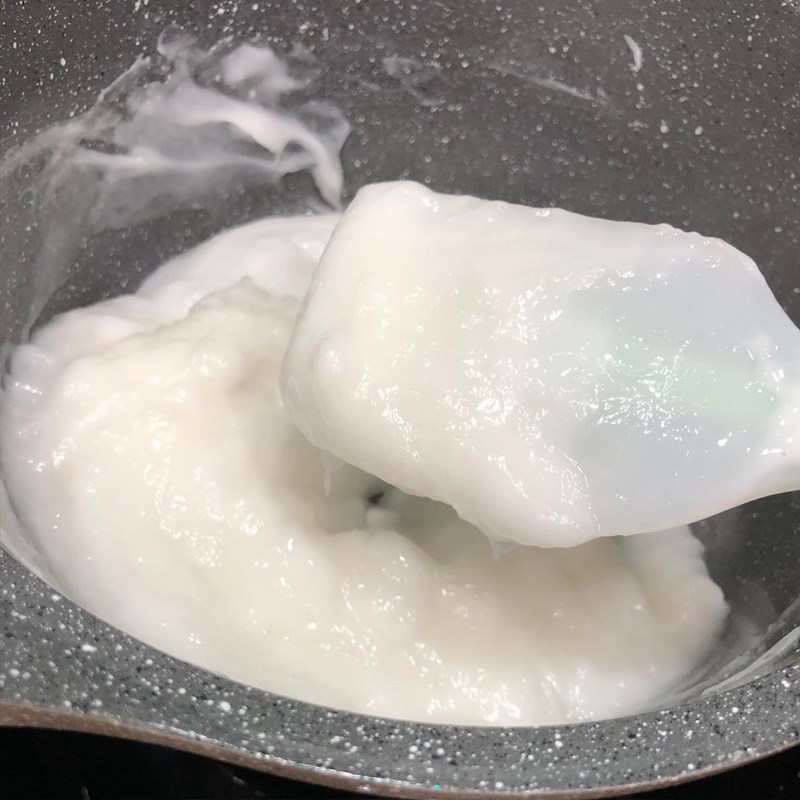

3. Prepare the Dipping Sauce
-
Mix in a bowl:
-
2 tbsp warm water
-
1 tbsp sugar
-
1 tbsp vinegar
-
1 tbsp fish sauce
-
-
Stir until sugar dissolves. Add finely chopped garlic and chili to taste.
4. Assemble and Serve
-
Scoop the hot bánh đúc into bowls.
-
Top with the mushroom-pork mixture, reserved fried shallots, and some fresh herbs like cilantro.
-
Drizzle with sweet-sour fish sauce.
-
Serve immediately while hot!
5. Final Dish The dish is warm, silky, and slightly chewy, balanced by the rich, savory pork-mushroom topping and the tangy, spicy dipping sauce. A perfect comfort food to enjoy on a chilly day!
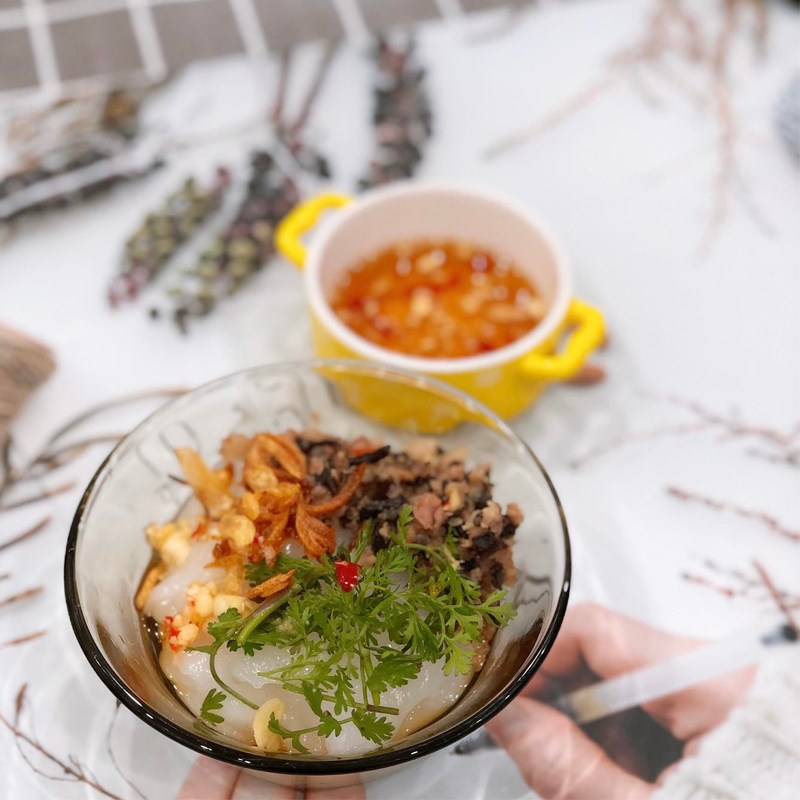
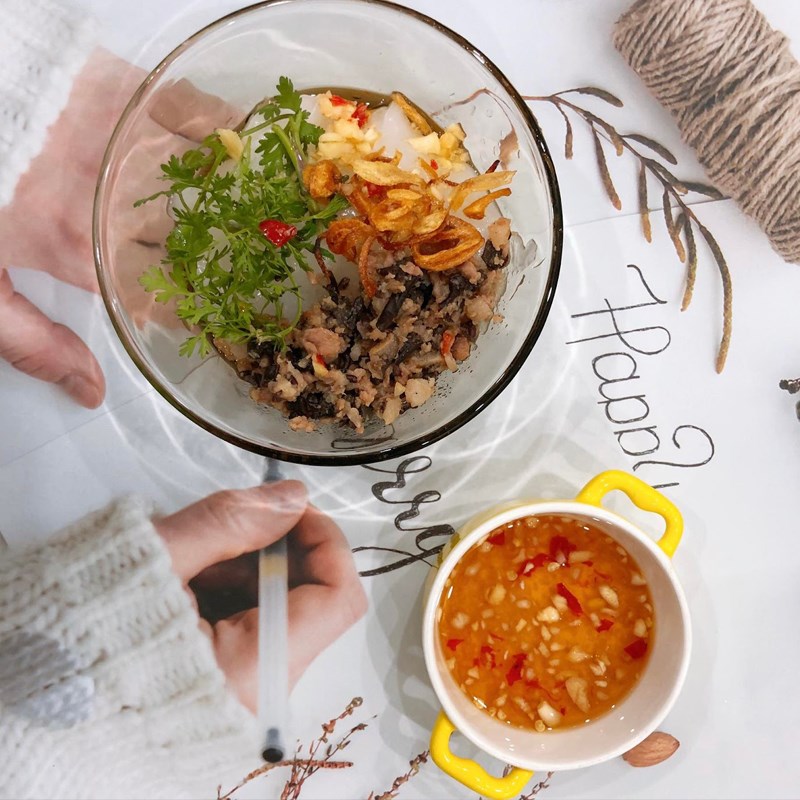
In the heart of Vietnam’s culinary tradition lies bánh đúc nóng—a humble yet soul-warming dish that has nourished generations. While not extravagant in appearance, this savory rice cake holds a deeply emotional place in the memory of many Vietnamese, especially those who grew up in the northern regions where the dish was most beloved.
Bánh đúc originally began as a simple steamed rice cake made from non-glutinous rice flour, eaten plain with a pinch of salt or a dash of soy sauce. Over time, it evolved into bánh đúc nóng—served warm, topped with minced pork, wood ear mushrooms, crispy shallots, and drizzled with a delicate blend of sweet-sour fish sauce. This transformation reflected both creativity and the desire to turn humble ingredients into something comforting and complete.
In the early mornings or chilly evenings of Hanoi, one might hear the nostalgic street cry: “Ai bánh đúc nóng đây!” Vendors would appear pushing wooden carts with steaming pots, scooping the velvety, thick rice batter into small bowls, layering it with savory meat and golden shallots, then handing it over with a warm smile. For many, it was more than food—it was a ritual, a moment of warmth in cold weather, or a reward after a long school day.
Beyond its flavor, bánh đúc nóng is a story of resourcefulness and love. It’s a mother stirring a pot slowly over the fire, testing the texture with the back of a spoon. It’s a grandmother saving bits of mushrooms and pork to make the topping extra flavorful. It’s the essence of care in every ingredient.
Today, while trendy dishes rise and fall in popularity, bánh đúc nóng remains a quiet classic—served at local eateries or lovingly recreated at home. It speaks to those seeking comfort, memory, and the unmistakable taste of home. It reminds us that sometimes, the most modest dishes carry the richest stories.
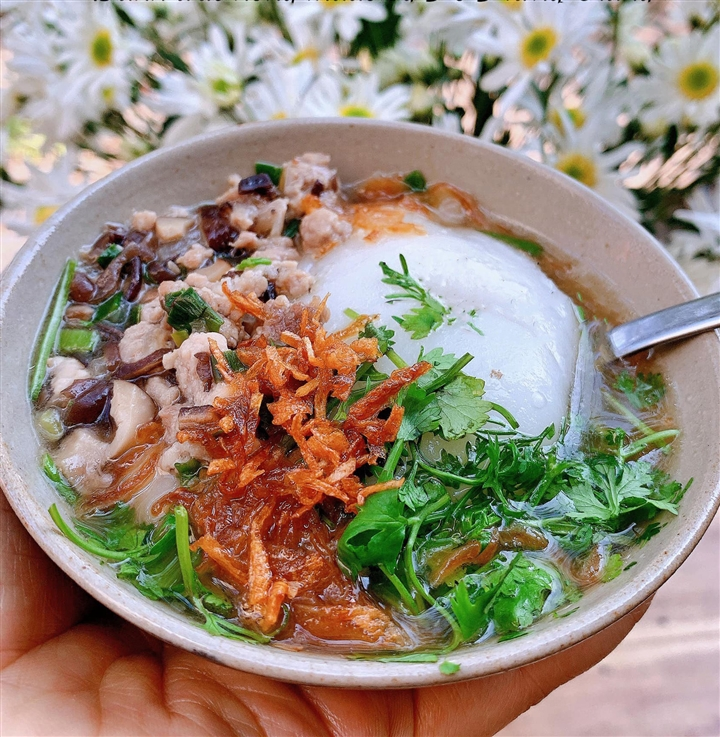
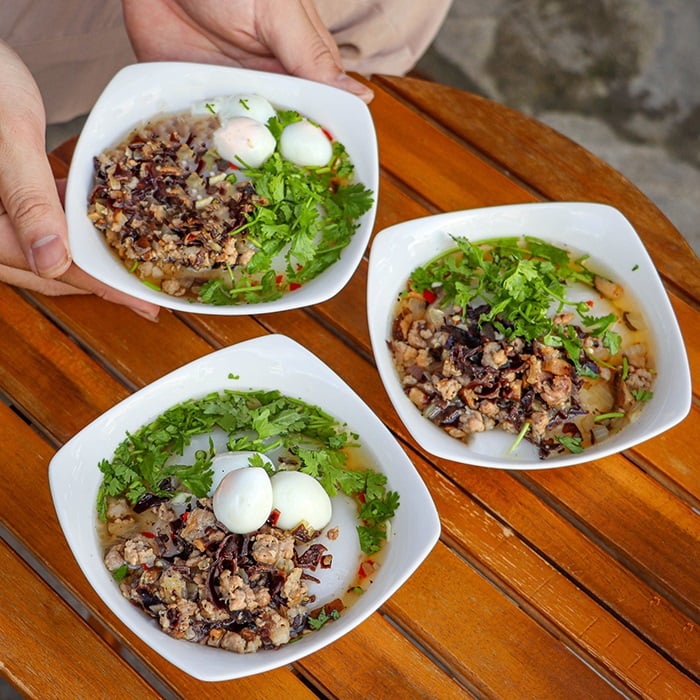
(Bánh Đúc Nóng – Delicious and warm dishes of Hanoi winter)
Our choices
 Bánh đúc nóng Lê Ngọc Hân
Bánh đúc nóng Lê Ngọc Hân
Bánh Đúc Nóng Trung Tự (Sice 1996)
103b5 Ng. 46C P. Phạm Ngọc Thạch, Trung Tự, Đống Đa, Hà Nội, Việt Nam
